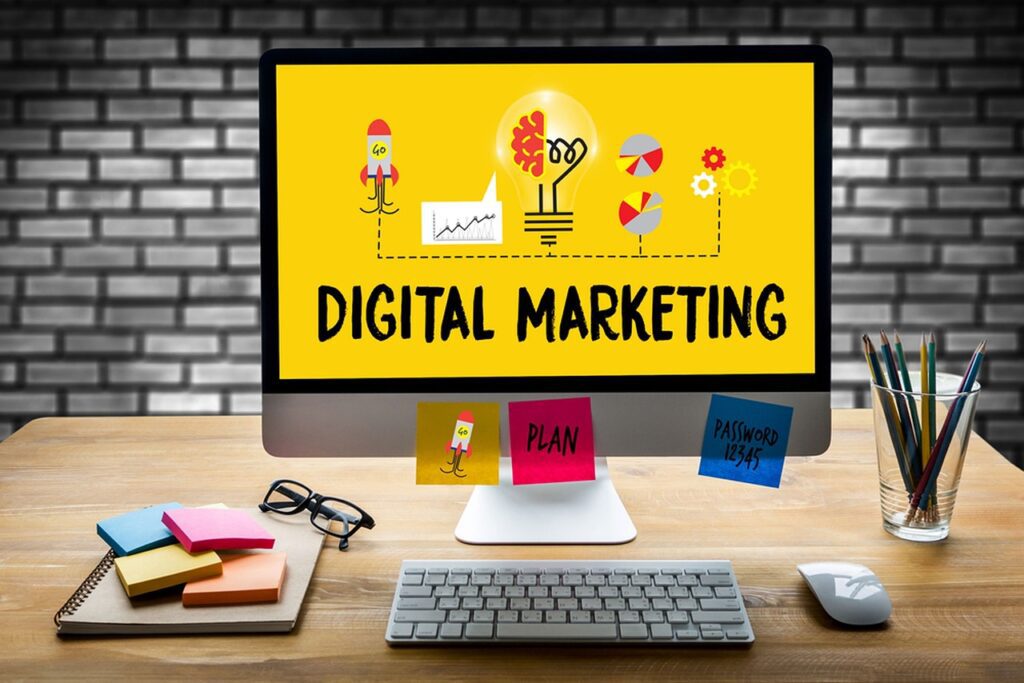
digital Marketing Foundations
1. Understanding Marketing Principles
Marketing is the process of getting potential clients or customers interested in your
products and services. It revolves around four key elements, commonly referred to
as the 4 Ps of Marketing:
● Product: The actual item or service you’re selling. It should meet a specific
customer need or solve a problem.
● Price: How much the product or service costs. Pricing strategies can vary
based on market demand, competition, and perceived value.
● Place: Where and how the product is distributed. In digital marketing, “place”
could refer to your website, social media channels, or e-commerce platforms.
● Promotion: The strategies used to promote the product and increase brand
awareness (ads, SEO, social media, email marketing, etc.)..
Example: Apple follows the 4 Ps model with its iPhone:
● Product: High-end smartphone with advanced features.
● Price: Premium pricing to reflect its value.
● Place: Apple stores, online platforms, and retail partners.
● Promotion: Global ad campaigns, social media, and influencer collaborations.
2. Customer Behavior and Market Segmentation
Understanding customer behavior is essential for targeting your audience effectively.
In digital marketing, we often segment the market to identify specific groups that are
most likely to engage with a product or service. This is known as Market
Segmentation.
● Demographics: Age, gender, income, education level, etc.
● Psychographics: Interests, values, attitudes, lifestyle choices.
● Geographics: Location (local, national, or international markets).
● Behavioral: Purchasing habits, brand loyalty, user status, and readiness to
buy.
Example: An eco-friendly beauty brand may segment its market by targeting:
● Demographics: Women aged 20-35 with disposable income.
● Psychographics: Environmentally-conscious and health-focused individuals.
● Geographics: Urban areas with access to online shopping.
● Behavioral: People who regularly buy natural or organic beauty products.
seo specialist in palakkad
3. Marketing Funnel
The Marketing Funnel represents the journey a customer takes from learning about a
product to making a purchase. The stages include:
1. Awareness: The customer becomes aware of your brand through ads, SEO,
or social media..
2. Consideration: They consider your product by engaging with content, reading
reviews, or comparing with competitors.
3. Conversion: The customer makes a purchase or completes a desired action
(e.g., signing up for a newsletter).
4. Loyalty: After the purchase, the customer is nurtured to become a repeat
buyer through retention strategies like email marketing.
5. Advocacy: Loyal customers become advocates by referring friends and
leaving positive reviews.
6. TOFU – MOFU -BOFU
Example: A clothing brand may run Facebook ads (awareness), offer discounts for
first-time buyers (consideration), optimize the website checkout process
(conversion), send follow-up emails (loyalty), and encourage social media sharing
(advocacy).
4. Marketing Mix
The Marketing Mix refers to combining both traditional and digital strategies to create
a holistic marketing plan. Businesses need to balance online and offline efforts
depending on their audience.
● Offline Strategies: TV, radio, print ads, billboards, direct mail.
● Online Strategies: SEO, social media marketing, PPC, content marketing,
email marketing.
Example: A restaurant may use offline strategies like billboards and flyers for local
promotion while using Google Ads and Instagram for online promotion to attract new
customers.seo specialist in palakkad


